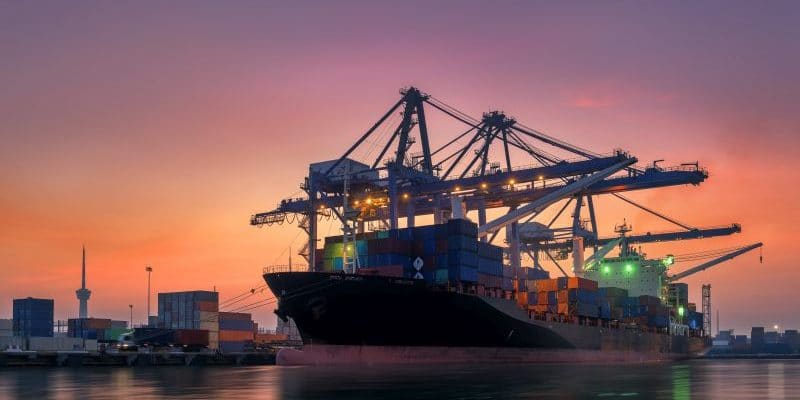
We all leave some sort of mess in our wake, but unlike living with a disorganized bedroom, the waste we produce from using electricity and burning fossil fuels can have catastrophic consequences. Pollution is a dire threat — and the shipping industry is responsible for a significant amount of it.
Because shipping is such a vital point in our global economy, ceasing to use planes, ships, and trucks is not an immediately viable option. Though it’s imperative that we do find a solution to stop the bleeding. Here are some facts regarding the incredible amounts of pollution freight industry contributes.
Container ships
Shipping containers produce more greenhouse gas emissions than some small countries. According to The Essential Daily Briefing:
“It has been estimated that just one of these container ships, the length of around six football pitches, can produce the same amount of pollution as 50 million cars. The emissions from 15 of these mega-ships match those from all the cars in the world. And if the shipping industry were a country, it would be ranked between Germany and Japan as the sixth-largest contributor to CO2 emissions.”
It’s difficult to imagine how much carbon dioxide that is, especially because ships operate so far out at sea. Alongside CO2, ships also release nitrous oxides (NOx) and sulphur oxides (SOx), which are highly toxic chemicals that are proven causes of acid rain. While manufacturers are slowly designing less environmentally detrimental cars, the oceanic freight industry is subject to fewer regulations.
Effects on the ocean
Besides gas emissions, container ships are responsible for other kinds of pollution including ballast water, biocides (chemicals used in antifouling paints), waste (such as sewage and garbage from human activity), and sometimes outright oil spills, which are excruciatingly difficult to clean. DoSomething.org mentions how the National Academy of Science estimated in 1975 that ships (including cruise ships) dumped as much as 14 billion pounds of garbage into the ocean (which has only increased since then). Contaminants have disastrous effects on ocean ecosystems: pollution kills over one million seabirds and 100,000 sea mammals every year because they cannot survive in toxic waters, and coastal nations dependent on seagrass meadows, mudflats, and wetlands are losing critical resources when aquatic vegetation dies off.
Freight trucks
The Environmental Defense Fund says that freight truck movement is responsible for seven percent of all corporate greenhouse gas emissions. The terrestrial shipping industry is remarkably inefficient thanks to centralization and a lack of transparency, so trucks drive billions of miles every year empty or partially full. Capturing even half of current unused capacity could reduce carbon emissions by as much as 100 million tons per year.
Yes, 100 million tons. Much more than that is currently floating in our atmosphere, in our breathing air. There are several different ingredients to air pollution: particulate matter (particles of metal and soot, which are the reasons why smog is murky-colored), hydrocarbons (which react with sunlight to create ground-level ozone, which is important in the atmosphere but we are definitely not supposed to breathe it), carbon monoxide (which can block oxygen from vital organs when inhaled), and more — including pollutants shared with container ships, like NOx, SO2, CO2 (cars and trucks produce one fifth of the United States’ carbon emissions), and other toxins.
Effects on human and environmental health
“Diesel soot is a toxic air pollutant linked to human cancer. A new analysis by state and local clean air regulators concludes that more than 125,000 Americans will get cancer from diesel fumes. Other studies have linked diesel exhaust to the development of asthma.”
50,000 people die prematurely each year from particle soot poisoning.
As for plants and animals, the repercussions are innumerable. Acid rain can change the composition of rivers and lakes, killing even more aquatic species; pollution that seeps into soil corrupts it in such a way that critical microorganisms die off, which tips ecosystems out of balance; and plants cannot survive in pollutant-rich soil and air.
What can be done?
There are efforts being made to reduce freight pollution, if not outright eliminate it yet. We at Fr8 Network are proud of our blockchain-based technology that decentralizes the trucking industry, allowing carriers and suppliers to plan more efficient routes. This way, trucks consume less fuel and drive fewer unnecessary miles, decreasing the rate at which they contribute to air pollution.
The recent Paris Agreement set a worldwide goal of limiting global warming to 2.7 degrees Fahrenheit above pre-industrial levels. The International Maritime Organization is motivated to enforce this goal, and the organization agreed to reduce emissions by at least 50 percent of 2008’s levels by 2050. If we continue down the path we are on, our lives and environment are in trouble — but there is hope for reducing the freight industry pollution as much as possible.
